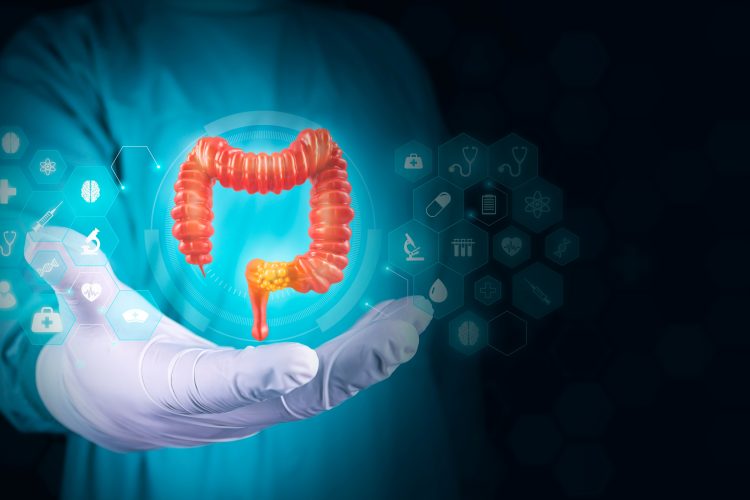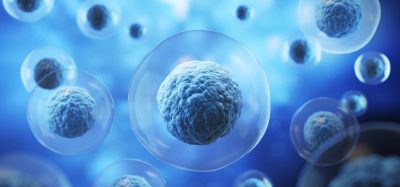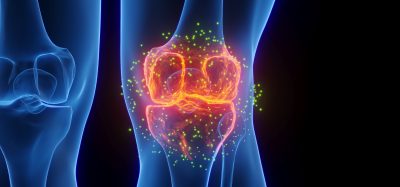Damaged small intestine repaired with hPSC-derived organoids
Posted: 17 September 2024 | Drug Target Review | No comments yet
Cincinnati Children’s have repaired damaged intestines in a rodent model, moving research efforts closer to clinical trials.


Cincinnati Children’s have made a significant achievement in organoid medicine, with their new study detailing how lab-grown human tissue successfully repaired damaged intestines in a rodent model. This moves decades of research efforts closer to first-in-human clinical trials and could result in novel therapies for conditions such as Crohn’s disease (CD) and ulcerative colitis (UC).
In 2019, Holly Poling, Institutional Investigator at the Center for Stem Cell and Organoid Medicine (CuSTOM) at Cincinnati Children’s, observed microscopic proof that organoids derived from human tissue returned function to a small loop of severely damaged rodent intestine.
Speaking of the newly published study, Poling, the lead author, explained: “Our cellular product was much more than a surface patch over intestinal damage. We could see that the cells we introduced induced repairs across all the important layers of the intestine, including the musculature of the mesenchyme and the internal protective surface layer, or epithelium.”
She continued: “We confirmed the formation of a variety of cell types and all of them were human, including new blood vessel incorporation. The repaired regions showed appropriate barrier function, too. We could see cells responding to chemicals in the ways that they should respond.”
Furthermore, the researchers discovered another crucial finding: “We checked the brain, kidneys, heart, lungs, liver, and other areas. For the time period we tracked, we didn’t find any of the human cells anywhere that they weren’t supposed to be.”
The team included James Wells, the principal investigator responsible for the world’s first functional, three-dimensional (3D) intestinal organoid from induced pluripotent stem cells (iPSCs), described in a 2010 Nature study. Since then, Cincinnati Children’s created CuSTOM, recruited excellent researchers, and published a series of successes in developing organoids of many key organs, including the stomach, colon, liver, pancreas, kidney and lungs.
Primarily, these new tissues have been utilised as testing platforms for basic research to understand disease causes and mechanisms, and to assess potential new medications without relying predominantly on animal models.
However, because the sophistication of intestine organoids has improved, with them now incorporating functioning nerves, immune cells, and other essential functions, they have huge potential to be a form of cell therapy transplantation. Cincinnati Children’s has invested over $10 million as part of its Pursuing Our Potential Together initiative to support the research team.
This investment was augmented by three grants totalling $11 million from the Farmer Family Foundation, which aided the launch of the CuSTOM Accelerator Lab. The lab leads the production of organoids that meet rigorous Good Manufacturing Practice (GMP) standards needed for using the tissues in humans.
Developing a rodent model
Animal-based testing was required, after achieving several successes with tiny organoids grown in lab dishes, to determine if these tissues could repair real organs. To develop a sustainable rodent model, Nambirajan Sundaram, Staff Scientist at CuSTOM, and Alexander Cortez, then-surgical resident, led the two years of gene editing, advanced microsurgery techniques and veterinary skills required.
The researchers focused on a rat model instead of a mouse model because the animal needed to be large enough to reliably perform a “Roux-en-Y” surgical procedure. They began with rodents supplied by collaborators in France, which were engineered to knock down enough of their immune systems to prevent rejecting the insertion of human genes and tissues but remain healthy enough to receive and recover from surgery.
Sundaram commented: “Without their full immune system, these rodents often don’t survive very well even without doing any surgery…Ultimately, we were able to standardise our process so that we could track the rodents for 10 weeks after they received the cell therapy. Once the data started coming in, it was very promising.”
Now, the CuSTOM Accelerator lab can move forward with many tests that will validate the safety of materials and methods to be used in human clinical studies, having an established rodent model.
Magdelena Kasendra, Director of Research and Development at CuSTOM, concluded: “There is no other stem cell therapy product with such extensive regenerative potential. Demonstrating its efficacy in the appropriate preclinical model, along with rigorous safety assessments, is a pivotal step toward advancing it to first-in-human clinical trials.”
Cincinnati Children’s has a patent application in process related to the work in this study.
This study was published in Cell Stem Cell.
Related topics
In Vivo, Organoids, Regenerative Medicine, Stem Cells
Related conditions
Crohn’s disease (CD), ulcerative colitis (UC)
Related organisations
Center for Stem Cell and Organoid Medicine (CuSTOM), Cincinnati Children's








